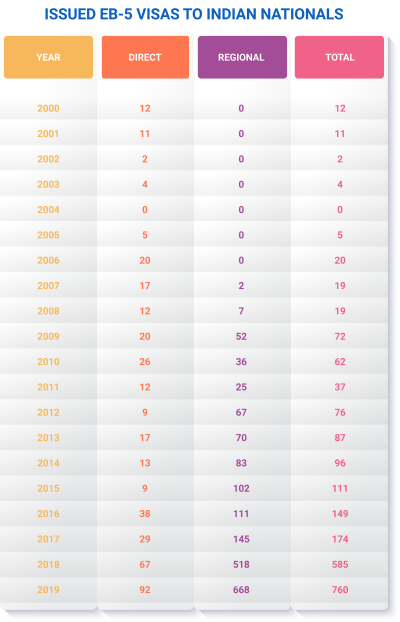
As the second largest Asian immigrant group to the US after China, Indian investors have been increasingly drawn to the EB-5 visa program, attracted by the potential benefits it offers. Despite some challenges, such as retrogression issues and proving the source of funds, the popularity of EB-5 visas among Indians is expected to continue rising.
Current EB-5 stats for Indian investors
India is the fifth largest economy in the world and it’s booming with high-net-worth individuals and billionaires. So much, that the number of ultra-high-net-worth individuals (UHNWI) with a net worth exceeding $30 million is expected to increase to 19,119 individuals by 2027 from 12,069 in 2022, according to a Frank Knight report.
Meanwhile, India’s billionaire population is projected to reach 195 individuals in 2027 from 161 in 2022, the report said.
A large portion of this wealthy group of Indians considers the United States not just a destination for a second passport, but also a symbol of their family wealth. For this and other reasons, India has long been a vibrant market for EB-5 investors and remains the second largest Asian immigrant group to the US after China.
The increase parallels the country’s growing economy and population. According to the Indian government´s 2022-2023 Economic Survey, GDP it’s expected to grow 6-6.8% between 2023 and 2024. Meanwhile, its population is expected to surpass China as the world’s most populous country by the end of 2023, totaling 1.429 billion people, according to United Nations World Population Prospects. The number of EB-5 visas issued to Indian investors has been increasing steadily over the last 20 years. In 2022, the issued visas for Indian investors reached 1,381, prompted by loosened Covid-19 restrictions and the approval of the EB-5 Reform and Integrity Act of 2022.
The New law allowed concurrent filing of applications, giving Indians residing in the US the opportunity of adjusting their visas to EB-5 regardless of their original visa status without traveling back to India to apply from there.
Historic overview of Indian demand for EB-5 visas
The second sharpest increase to date of EB-5 visas issued to Indian investors happened during the Trump Administration. They reached 760 in 2019, which was more than five times the previous peak in 2016 (149).
Another interesting trend is the fact that Indian EB-5 investors up till 2007 would only make direct EB-5 investments. The first time they took interest in regional centers was in 2008, with regional center EB-5 visas now significantly more than direct investments for Indian investors. In 2019, out of the 760 total EB-5 visas issued to Indian investors, 668 were for regional centers and 92 were for direct investment visas.

EB-5 popularity in India
One of the top reasons for the EB-5 rising popularity among Indian investors is that the program paves the way for a green card and gives applicants an opportunity to settle their family members in the US and, at the same, being a legal way of investing money in a foreign country, where there is a good chance of it returning to them after a few years. There is also a strong interest in this type of investor visa from Indians who are already in the US on different visas, such as the H-1B, and are looking for a route to a green card.
EB-5 investors from India are often advised to take the regional center option instead of the direct investment one so that they do not end up becoming directly responsible for creating 10 jobs in the U.S. However, many Indian investors show interest in setting up their own company and end up with direct investment.
Proving source of funds
A reason why some Indian applicants may see some challenges with their EB-5 applications is when they do not provide a proper and complete money trail of their investments. This process involves providing documentation of all their funds and assets used for the EB-5 investment, including a comprehensive report of the legal source of their funds, details of their taxes and taxed incomes, ownership of their assets if acquired through succession etc.
Some investors get their family members involved in the process of remitting money to the US so that the main EB-5 applicant can meet the $800,000 plus investment threshold. This is a crucial step which becomes complicated since the Indian Central Bank caps remittances outside of the country per individual.
Retrogression situation
According to the US State Department’s July 2023 Visa Bulletin, India’s final action date is April 1, 2017, The date remains unchanged in June, indicating an increased backlog for Indian applicants.
Future for Indians and EB-5
The Central Bank of India has started to encourage Indian investors to invest abroad, and the EB-5 route could be one of the ways that the country could achieve its aim of promoting economic cooperation with host countries like the US.
As more Indian investors become aware of the opportunities available under the EB-5 program, more investment via this route is to be expected.






